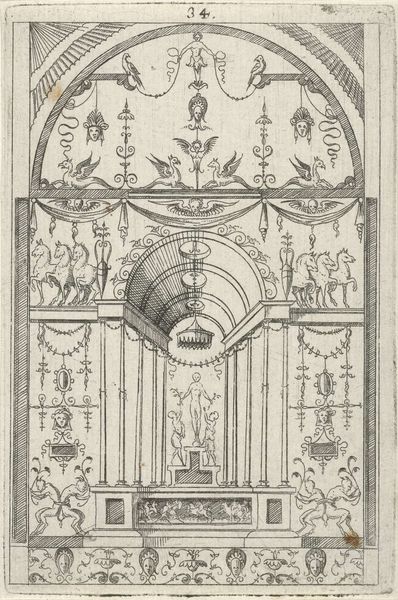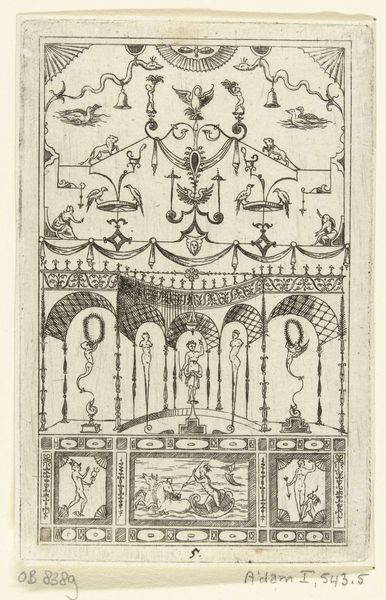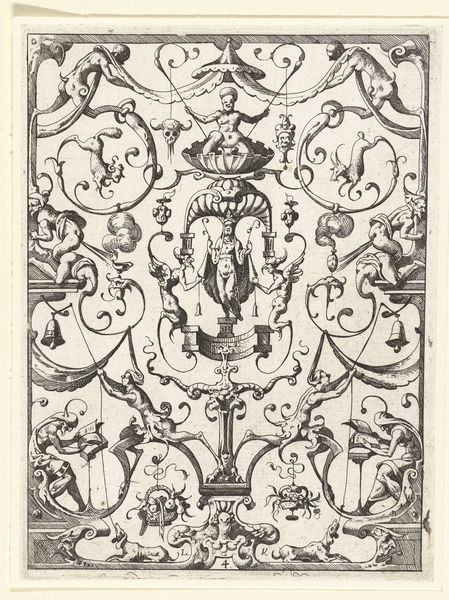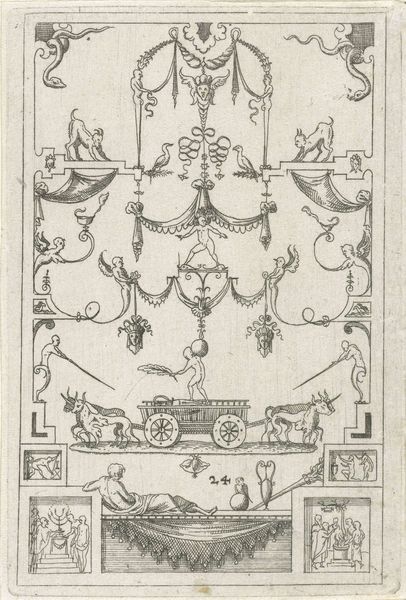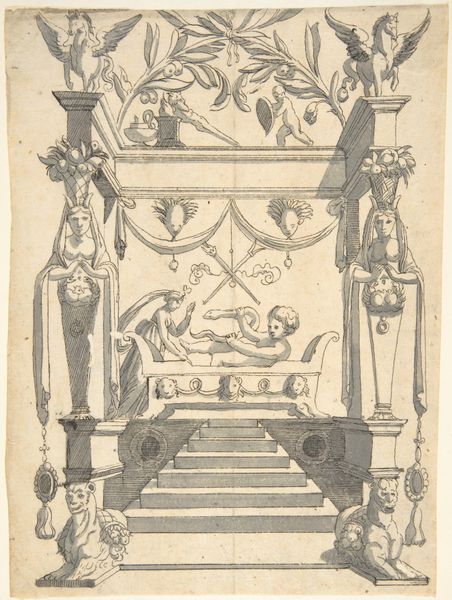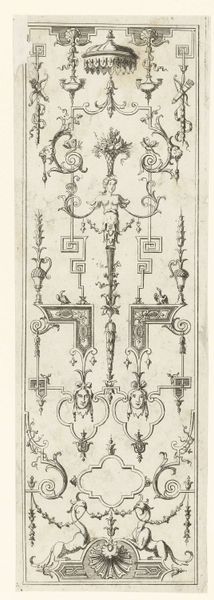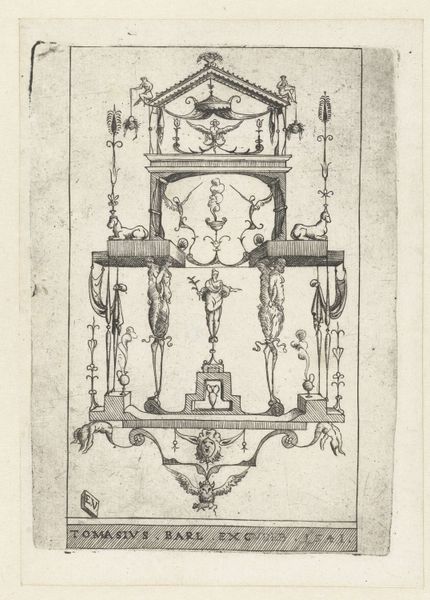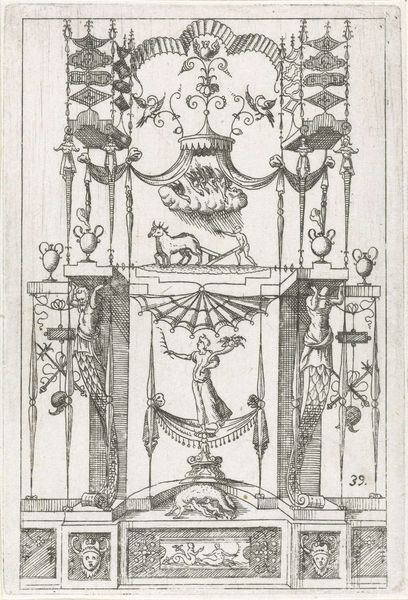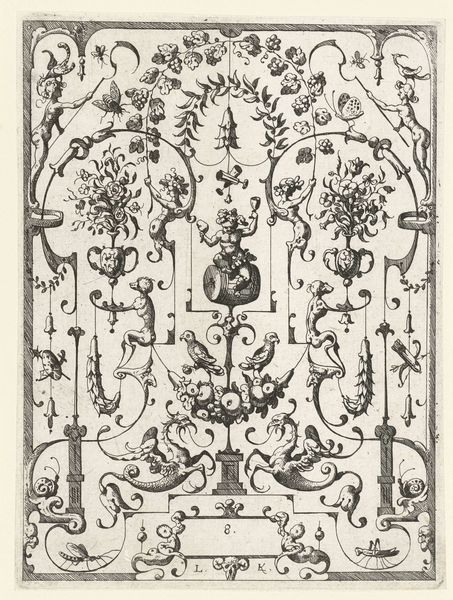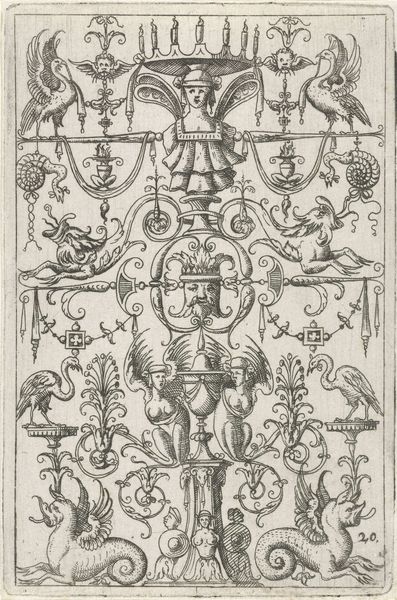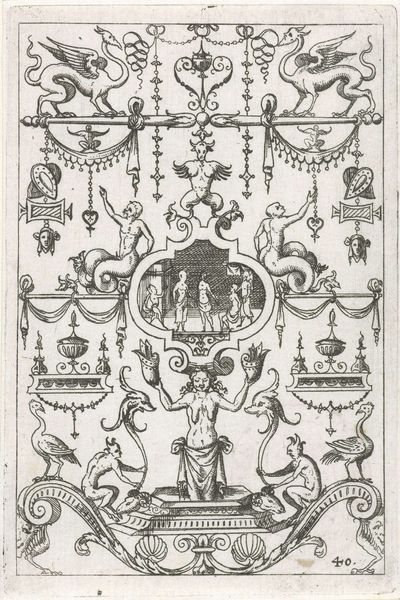
drawing, ink, engraving
#
drawing
#
allegory
#
pen drawing
#
old engraving style
#
mannerism
#
figuration
#
11_renaissance
#
personal sketchbook
#
ink
#
history-painting
#
engraving
Dimensions: height 106 mm, width 70 mm
Copyright: Rijks Museum: Open Domain
Curator: My eyes keep darting around this. There's so much going on. Editor: Indeed. We're looking at "In de hoeken linksboven en rechtsboven staat een zwaan" or "In the upper left and upper right corners is a swan" an engraving by Hans Sibmacher created sometime between 1525 and 1594. It's bursting with figures and architectural flourishes. It’s an ornamental design—perhaps for metalwork, or even stage design. Curator: Ornamental, yes, but it feels...almost unsettling? It’s so precise, so ordered, yet packed with bizarre, almost grotesque little scenes. Like a dream turned into a very detailed, slightly disturbing tapestry. Editor: That unsettling feeling might stem from the influence of Mannerism, which reveled in artificiality and complex compositions. Sibmacher operated within the artistic milieu of Nuremberg, where these elaborate ornamental prints had a ready market amongst the goldsmiths. We could also suggest the historical backdrop. The reformation was well underway, and there was both increased religious strife and lavish artistic creation simultaneously happening throughout Europe. Curator: It reminds me of the layers you find in a beautifully made clock: you see the sleek hands moving gracefully, but underneath is all this ticking, complex machinery working overtime. Here you see those archers and cupids – playful things on the surface, but surrounding are dark, solemn, portrait busts that stare out from the arches...they see it all. Editor: Right, the swan motifs, for example, might allude to fidelity or love, common in allegorical imagery of the period, offering viewers a moral or symbolic layer amidst the decoration. These elements were part of a larger visual language understood by contemporaries. Curator: A language I only catch glimpses of! Still, this print… it’s a cabinet of curiosities etched onto paper. It makes me wonder what strange desires fueled its creation. Editor: For me, considering the context in which such an artwork would have circulated enriches my experience. From its creation through to its life today within this gallery, artworks accrue many layers of interpretation. Curator: A good reminder of why history and art should always keep each other company!
Comments
No comments
Be the first to comment and join the conversation on the ultimate creative platform.
